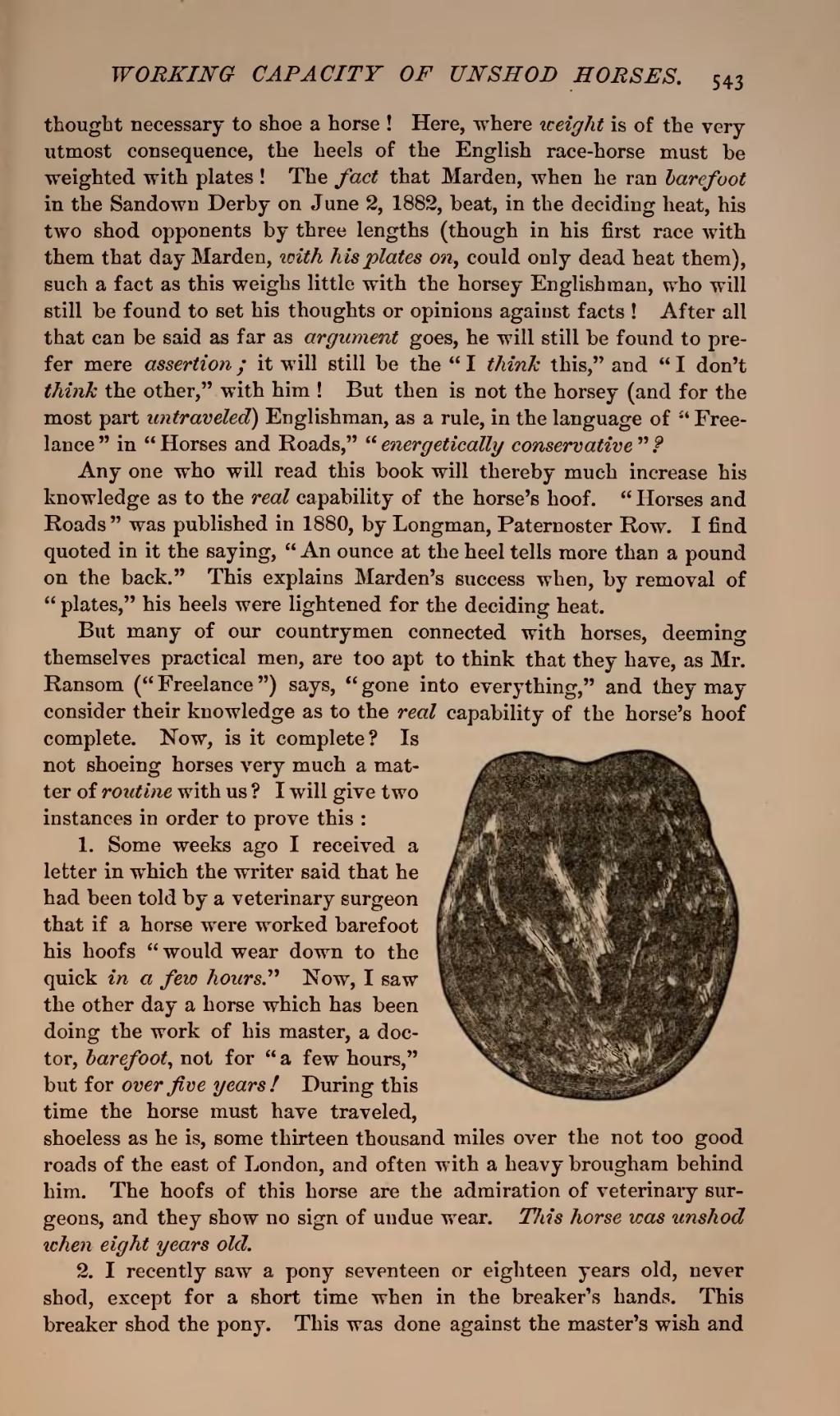thought necessary to shoe a horse! Here, where weight is of the very utmost consequence, the heels of the English race-horse must be weighted with plates! The fact that Marden, when he ran barefoot in the Sandown Derby on June 2, 1882, beat, in the deciding heat, his two shod opponents by three lengths (though in his first race with them that day Marden, with his plates on, could only dead heat them), such a fact as this weighs little with the horsey Englishman, who will still be found to set his thoughts or opinions against facts! After all that can be said as far as argument goes, he will still be found to prefer mere assertion; it will still be the "I think this," and "I don't think the other," with him! But then is not the horsey (and for the most part untraveled) Englishman, as a rule, in the language of "Freelance" in "Horses and Roads," "energetically conservative"?
Any one who will read this book will thereby much increase his knowledge as to the real capability of the horse’s hoof. "Horses and Roads" was published in 1880, by Longman, Paternoster Row. I find quoted in it the saying, "An ounce at the heel tells more than a pound on the back." This explains Marden’s success when, by removal of "plates," his heels were lightened for the deciding heat.
But many of our countrymen connected with horses, deeming themselves practical men, are too apt to think that they have, as Mr. Ransom ("Freelance") says, "gone into everything," and they may consider their knowledge as to the real capability of the horse’s hoof  complete. Now, is it complete? Is not shoeing horses very much a matter of routine with us? I will give two instances in order to prove this:
complete. Now, is it complete? Is not shoeing horses very much a matter of routine with us? I will give two instances in order to prove this:
1. Some weeks ago I received a letter in which the writer said that he had been told by a veterinary surgeon that if a horse were worked barefoot his hoofs "would wear down to the quick in a few hours." Now, I saw the other day a horse which has been doing the work of his master, a doctor, barefoot, not for "a few hours," but for over five years! During this time the horse must have traveled, shoeless as he is, some thirteen thousand miles over the not too good roads of the east of London, and often with a heavy brougham behind him. The hoofs of this horse are the admiration of veterinary surgeons, and they show no sign of undue wear. This horse was unshod when eight years old.
2. I recently saw a pony seventeen or eighteen years old, never shod, except for a short time when in the breaker’s hands. This breaker shod the pony. This was done against the master’s wish and
